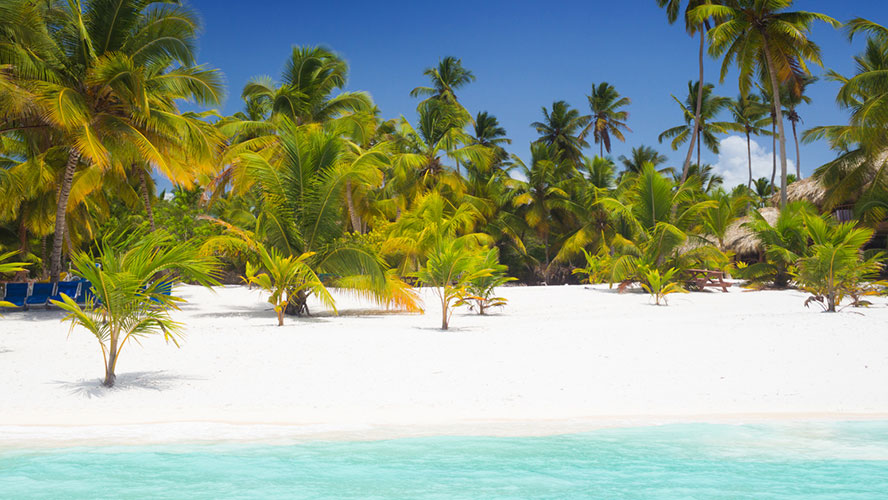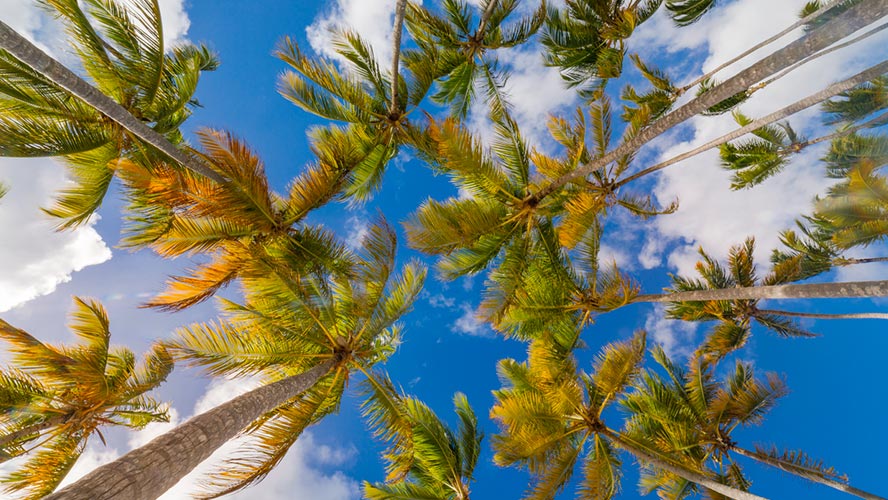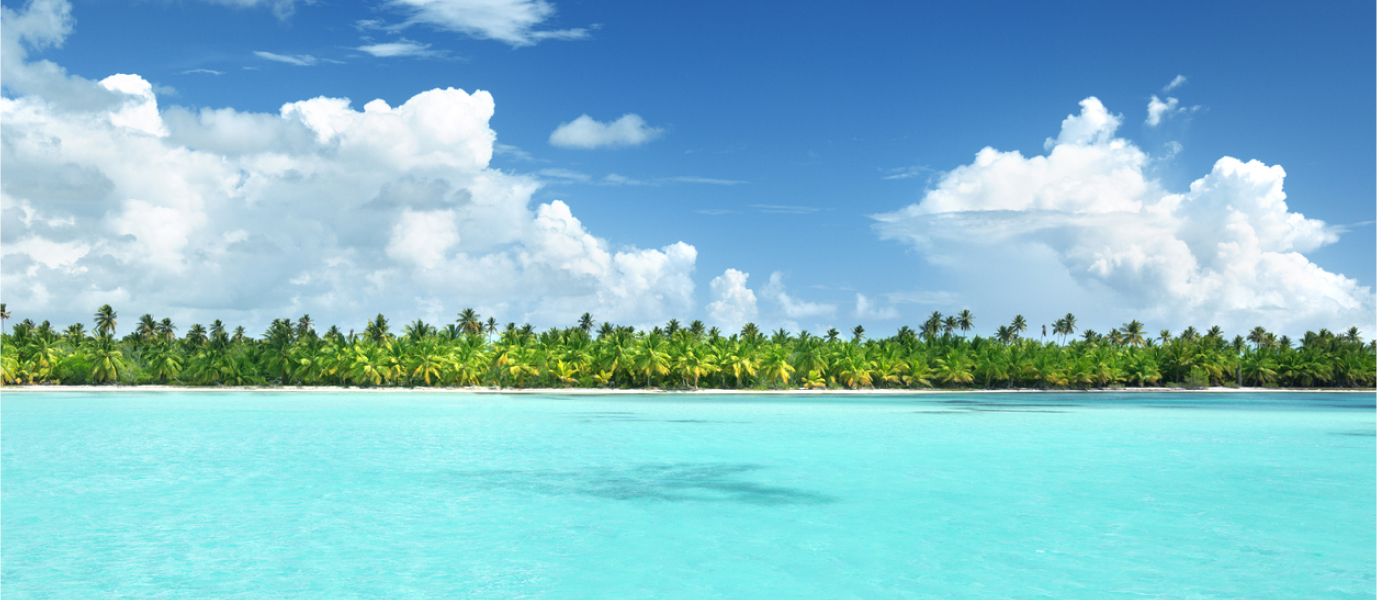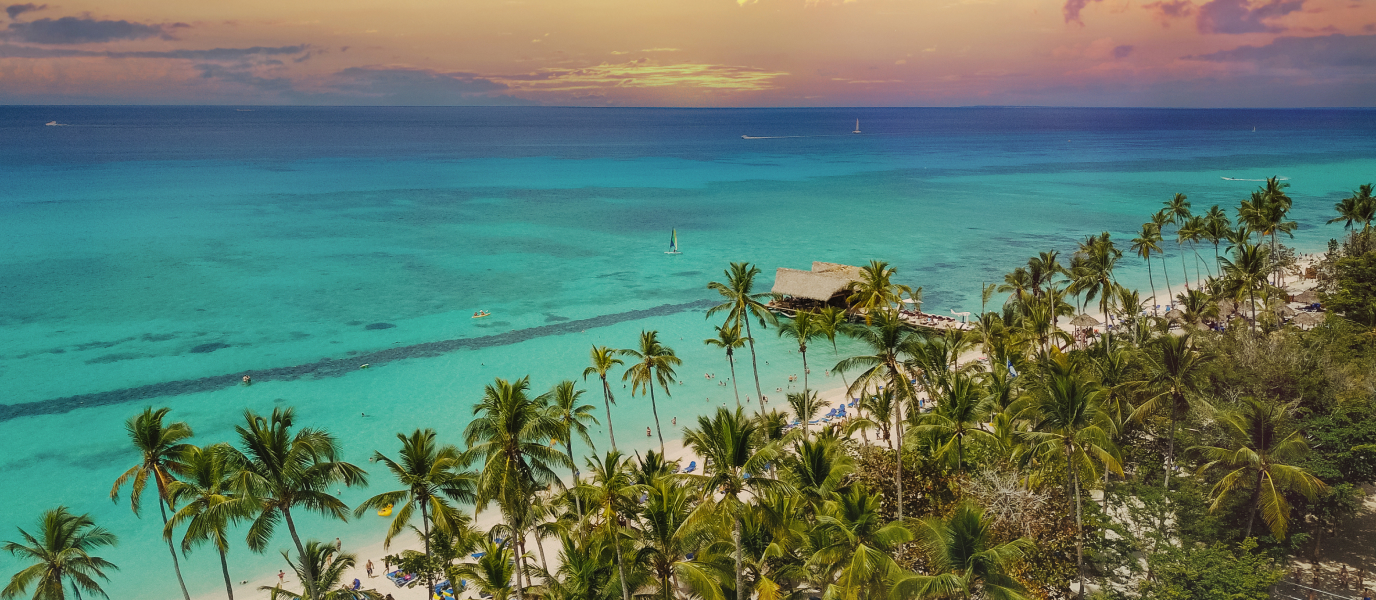The Caribbean is irresistible for any number of reasons, and one of its greatest attractions is, naturally, its beaches. We all carry in our minds that classic image in which the fading light at sunset illuminates the white sand while the palm trees sway gently in the sea breeze and the waves break rhythmically on the shore. Well, Saona Island, in the Dominican Republic, is that very place: a genuine Caribbean paradise.
Located to the south of Punta Cana, 1.5 miles off the coast of the peninsula that comprises the Cotubanamá National Park—formerly known as the Parque Nacional del Este—Saona Island is virtually uninhabited, and yet it is one of the most visited places in the Dominican Republic. The island’s amazing unspoilt nature—and the wonderful ambience that visitors enjoy on the excursions that arrive here daily—make this one of the most popular places with tourists on vacation in this area of the Caribbean Sea.
Saona Island: 100% nature
Known as Adamanay by the indigenous Tainos and discovered by Christopher Columbus on his second voyage in late 1494, Saona Island is one of three islands in the south east of the Dominican Republic—the others being Catalina Island and Catalinita. It is also a veritable treasure house of nature. The coral formations found in its waters and the fact that the island is the country’s most important nesting site for turtles are just two examples of Saona’s natural wealth.
As part of a National Park, the island, which occupies some 42 square miles, is fully protected. Saona Island provides a safe habitat for a huge range of plant species, including dense mangrove and extensive palm forests. Its coastal lagoons and areas of lowland rainforest are home to various bird and reptile species. Of course, the waters around the island offer a super-abundance of marine life: in addition to the different species of turtle that nest on its beaches, there are dolphins, manatees and countless fish and shellfish. It is immediately obvious that the ecological value of Saona Island is incalculable.

What can you do on Saona Island?
Most visitors explore Saona by means of one-day excursions. The boats carrying tourists arrive in the morning so that visitors can enjoy the beaches and various activities available, both on land and in the waters surrounding the island. In the evening, everyone embarks on the return journey to their respective departure points. A day on Saona Island is an experience that combines the island’s natural beauty and the invariably pleasant atmosphere (with music, dancing and laughter) to be found all over the Dominican Republic—and there’s almost always an open bar.
Beaches, more beaches, and even more beaches
To visit this jewel of the Dominican Caribbean is to enjoy the beach to the full—even before you arrive! This is because many of the excursions destined for Saona make a first stop-off at the Palmilla sandbanks, slender strips of sand that barely rise above the surface of the sea with very shallow areas. You can stop in the middle of the sea and the water will only be waist high—but it will be full of marine life. These wonderful natural pools are to be found just before crossing the narrow Catuano channel that separates the larger island, Hispaniola from Saona, the smaller island.
On Saona Island itself, the northern coast is more rugged, so excursions dock at various points along the island’s western and southern coasts where, naturally, the finest beaches are to be found. Catuano, Playa Bonita, Saona Beach, Playa del Gato, Playa Flamenco and Playa Canto de la Playa are just a few of the island’s prettiest and most popular beaches. The organized tours normally visit more than one of these beaches, so that people have a chance to swim, sunbathe on the sands, take photos or simply relax in the shade of a palm tree.

Mano Juan, the heart of Saona Island
Apart from the detachment of the Dominican armed forces at Catuano, the only part of the island (home to only 500 people in total) is the fishing village of Mano Juan, with its little, brightly-painted wooden buildings: houses, souvenir shops, and Saona Island’s small number of guest houses and restaurants. As you stroll through the village’s sandy streets, you can take in the relaxed atmosphere, with the sound of bachata emanating from some rudimentary beach bar as you browse for a souvenir of this idyllic destination.
One of the essential places to visit in Mano Juan is the Centro de Recuperación de Tortugas Marinas [Sea Turtle Rescue Center], the ideal place to appreciate the island’s richness and its importance as a sanctuary for these amazing sea creatures. From the village, you can also take a look at the Laguna de Los Flamencos, one of Saona’s large coastal lagoons, while the more adventurous visitors may want to walk some of the paths that criss-cross the island.
Active Saona: having fun in paradise
In addition to the beach, Saona Island is also a place where you can enjoy other kinds of activities. Number one on the list of attractions is related to its undersea wealth: it would be a crime to visit Saona and not go snorkeling. Many organized excursions include snorkeling in their itineraries, but if not, make sure you take your own goggles and snorkel.
Likewise, if you’re staying in a Barceló hotel, you can sign up for diving excursions. Miles of coral reefs, giant starfish, multi-colored fish, shipwrecks, underwater caves… this is definitely the place for an experience that is way out of the ordinary!
Back on land, the activity on Saona continues. For those willing to make the effort to haul themselves up from their beach towel, sun lounger or hammock, there are all sorts of activities on offer, from a beach-volley game to a bird-watching hike, while dance enthusiasts might fancy a merengue or bachata class.






































































